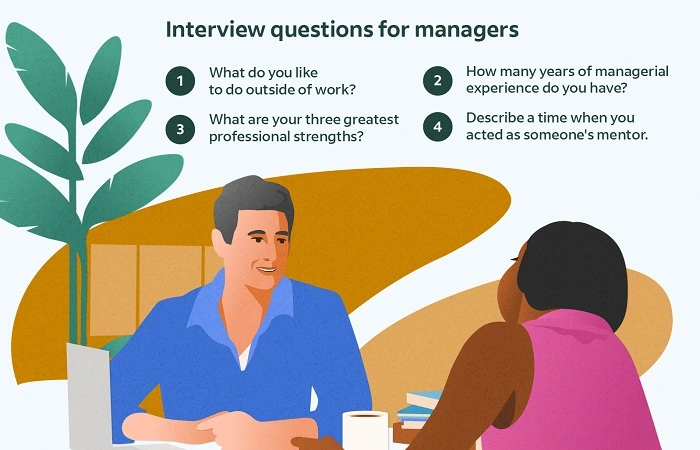Groups don’t manage themselves. People do. And the person who holds the thread—strategy, delivery, morale, growth—is the Group Manager. Not just a title. A hinge. When the role works, teams move as one. When it doesn’t, friction multiplies. Let’s build a clear map.
What Is a Group Manager?
A Group Manager leads multiple teams or a cluster of functions toward shared outcomes. Think span-of-control above line managers. Fewer daily standups; more cross-team alignment, roadmaps, budgets, hiring plans, and performance systems. They translate strategy into repeatable reality.
Where the Role Sits
- Above team leads. Coaches the managers who coach the ICs.
- Between strategy and execution. Turns objectives into roadmaps and capacity.
- Across functions. Partners with Product, Ops, HR, Finance, and Sales.
- Facing up and out. Communicates status, risks, and wins to executives and stakeholders.
Core Responsibilities
1) Direction and Outcomes
- Set 12–18 month goals that ladder to company strategy.
- Break goals into quarterly OKRs with clear owners and measures.
- Keep a single view of the truth: roadmap, dependencies, and risks.
2) People and Performance
- Hire for slope, not just skill—people who learn fast.
- Run a fair, predictable performance cycle. Calibrate across teams.
- Hold weekly 1:1s with your managers. Monthly skip-levels with ICs.
3) Systems and Rituals
- Cadences that reduce chaos: weekly staff, monthly business review, quarterly planning.
- Standardize how work is scoped, estimated, and post-morted.
- Dashboards that show progress, not just activity.
4) Budget and Capacity
- Headcount plans tied to outcomes, not wish lists.
- Vendor and tooling decisions with guardrails.
- Capacity math: what fits this quarter, what doesn’t, and why.
5) Culture and Communication
- Clear writing. Calm rooms. Meetings that end with owner + date.
- Psychological safety with standards—kind and clear.
- Recognition that lands: visible, specific, timely.
The Skill Stack
- Strategic clarity: See the forest. Name the trees. Pick the path.
- Operational rigor: Plans that survive Mondays.
- Coaching: Ask better questions. Grow managers.
- Decision-making: Default to speed with reversibility; pause for one-way doors.
- Communication: Write like a product spec. Speak like a neighbor.
- Conflict navigation: Surface tension early. Frame choices. Close loops.
- Change management: Prepare, communicate, stabilize, measure, iterate.
The Playbook (Week-by-Week Rhythm)
Mondays
- Review dashboards: goals, leading indicators, blockers.
- Meet your managers: align priorities; clear roadblocks.
- Send a short “This Week” note: top 3, owners, deadlines.
Midweek
- Cross-team sync: dependencies, decisions needed, risks.
- Stakeholder check-ins: Are we still solving the right problem?
- Skip-level coffee: 30 minutes with rotating ICs.
Fridays
- Wins and lessons roundup: quick note, public channel.
- Update the risk log. Add mitigations. Close the loop.
- Calendar hygiene: protect thinking time next week.
OKRs and Metrics That Matter
- Outcome OKRs: Customer impact, revenue, quality, satisfaction.
- Health metrics: Defect rates, cycle time, SLA, on-time delivery.
- People metrics: Retention, engagement, internal mobility, time-to-fill.
- Leading indicators: Early signals that predict misses—demo quality, design sign-offs, stakeholder NPS.
Tip: Tie three projects to one outcome, not three outcomes to one project. Focus multiplies.
Hiring a Group Manager (What to Look For)
- Scope proof: Led multi-team portfolios, not just large single teams.
- Systems thinker: Can show a before/after on process and outcomes.
- Talent builder: Success stories of managers they grew.
- Writing samples: Planning docs, postmortems, decision memos.
- References: Ask, “Would you work for them again?” Watch faces.
First 90 Days (A Simple Map)
Days 1–30: Listen and map.
- Roadmap, org chart, budget, risks, customer commitments.
- Meet every manager, key ICs, and stakeholders.
- Publish a “What I’m Hearing” memo with top themes.
Days 31–60: Tighten the system.
- Establish cadences. Clean up OKRs. Clarify owners.
- Launch a risk register. Start skip-levels.
- Quick wins that unblock teams.
Days 61–90: Land visible outcomes.
- Ship one cross-team project.
- Present a one-year org and capacity plan.
- Propose 2–3 bets with impact and cost.
Communication Templates
Weekly Staff Agenda
- Metrics snapshot
- Top 3 priorities and owners
- Decisions needed this week
- Risks, mitigations, asks
Status Update (Executive)
- Goal → progress → delta
- Risks → plan → owner
- Next 2 weeks → what changes
Decision Memo (One-Pager)
- Problem
- Options (pros/cons)
- Recommended path
- Impact, cost, timeline
- Decision owner, review date
Common Pitfalls (And Fixes)
- Too many projects, thin progress.
Fix: Cut scope. Timebox. Kill one thing publicly every quarter.
- Meetings with no decisions.
Fix: Agenda with choices. End with owner + date. Share notes.
- Unclear performance bar.
Fix: Leveling guide. Calibrations. Real examples. No surprises.
- Firefighting culture.
Fix: Root-cause postmortems. SLA for urgent vs. important. Quiet hours.
- Silent attrition.
Fix: Stay interviews. Career maps. Internal mobility every quarter.
Coaching Your Managers (Simple Questions That Work)
- What outcome are we missing and why?
- What’s the smallest experiment that changes this?
- Who’s the real customer here?
- What decision are we avoiding?
- How will we know this worked—in numbers and in feelings?
A Day in the Life (Feels Like This)
Morning: A metric dipped. You don’t blame me. You ask. You learn.
Afternoon: Two teams want the same resource. You frame the choice. You decide.
Evening: You write the memo. Crisp. Kind. Actionable.
You carry the thread so others can carry the work.
FAQs
Is a Group Manager the same as a Senior Manager?
Not always. Titles vary. The key is scope: multiple teams, shared goals, cross-functional work.
Should a Group Manager still be hands-on?
Some days, yes. But the main job is systems, people, and outcomes—not hero coding or solo sales.
How big should the span of control be?
Often 3–6 managers. Any wider, add a layer or delegate more authority.
How do you measure success?
Outcomes shipped, teams thriving, low surprises, clear communication, and talent that grows under your watch.
What’s the hardest part of the job?
Saying no. Protecting focus. Letting good ideas wait so the best ones finish.
Final Thought
A Group Manager is a conductor. Not the loudest instrument. The one who keeps time. When you build clean systems, coach with kindness, and protect focus, teams find a rhythm. Work hums. People grow. Results land. That’s the job.




